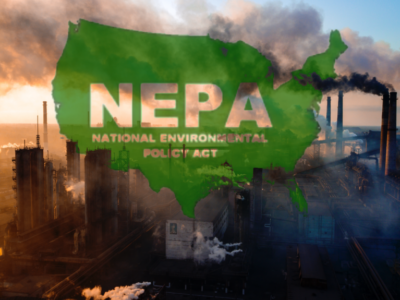Of Pipelines, Protests, and General Permits
A fight in North Dakota reveals problems in how we permit and review large infrastructure projects
Native American tribes and environmental groups are currently protesting the completion of an oil pipeline in North Dakota. The pipeline would travel beneath the Missouri River. Tribes and environmentalists are fighting the pipeline both through litigation and also through direct action (occupying the site where the construction to complete the pipeline beneath the river would occur).
There has been news coverage of the protests and the activism by Native Americans to challenge the pipeline. What I want to highlight here is how the pipeline fight is an example of a problem with how federal agencies currently review the environmental impacts of major infrastructure projects.
As this op-ed by the chair of the Standing Rock Sioux tribe (whose traditional land the pipeline would cross, and who are leading the fight against the pipeline) points out, the Army Corps of Engineers issued a permit for the pipeline to cross under the Missouri River under Section 404 of the Clean Water Act. (Section 404 regulates the discharge of fill or dredge material into rivers and wetlands.) Normally, when federal agencies issue permits for activities, they are required to examine the environmental consequences of issuing those permits, including providing public notice and comment, pursuant to the National Environmental Policy Act (NEPA). But for this project, the agency didn’t conduct any specific environmental review under NEPA. The reason? The project was treated as a “small” project because only short portions of it required permitting by the Corps of Engineers. It accordingly received approval under what are called “general permits” – something that I have written about before. General permits approve, up front, a category of presumably small-scale activities that have limited impacts. The Corps has created a general permit program for pipelines and other utility projects that are regulated by the Clean Water Act – Nationwide Permit 12. It does an overall, upfront NEPA review of the potential environmental impacts of all of the activities that might fall within the scope of the general permit. The position of the Corps is that usually once a general permit has been issued, then no further federal activity or permits are issued that require NEPA review – in part because there will be no significant environmental impacts from the project that haven’t already been analyzed.
General permits, as I have noted before, can be a very useful regulatory tool, allowing us to manage the problems of numerous, small-scale activities that might have significant environmental impacts. But it’s harder to see how a large, hundreds-of-mile long oil pipeline is a small-scale activity that doesn’t have significant environmental impacts. The problem is that general permits can be overinclusive in the activities they cover. A general permit makes sense for the construction of (for instance) an electric line serving a subdivision or a neighborhood, where one of the poles has to be installed in a wetland area. In that case, both the impacts of the particular component of the project the Corps is permitting, and the project as a whole are small. In this case, even if the particular pipeline component that is being permitted here has very small impacts, the arguments that the impacts of the pipeline project as a whole are small are much harder to support.
The Corps’ position is based on the fact that they agency only has regulatory jurisdiction over a small fraction of the project, and it argues that only the impacts of that aspect of the project are relevant to its decisions about whether to issue a general permit or for NEPA review. But those arguments eventually lead to using general permits for projects such as mountaintop removal coal mining projects. The Corps has (wisely to my mind) trimmed back on general permits in that context, imposing much more stringent requirements on their use. It may want to look more closely at some of the other general permits that it is using as well.
Reader Comments
One Reply to “Of Pipelines, Protests, and General Permits”
Comments are closed.







Dear Eric,
One of the major objections to the Keystone XL pipeline was that it would cause premature death for thousands of innocent citizens. Apparently this North Dakota pipeline is not as dangerous because we hear no warnings or concerns about premature deaths.
What makes the North Dakota pipeline so much safer? Does the North Dakota pipeline include safety measures that were omitted on Keystone XL? Was the risk of human fatalities exaggerated on Keystone but not North Dakota?
Hopefully our Nation will return to traditional values of honesty and integrity within the environmental permitting process under the Trump Administration, that would help make America great again. Please share our happiness and have a great day.